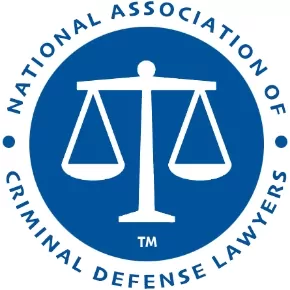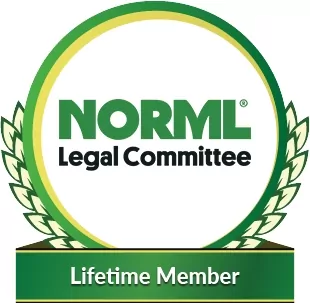If your property was seized by Customs and Border Protection (CBP) for forfeiture, the proceeding might follow the Civil Asset Forfeiture Reform Act of 2000 (CAFRA). Some forfeiture proceedings, however, are classified as “Non-CAFRA.” For example, CAFRA does not apply to the following types of seizures authorized under:
- the Tariff Act of 1930, as amended, or any other provision of law codified in title 19
- Title 19 U.S.C. § 1595a(c)(2) – “Merchandise introduced contrary to law”
- 19 USC J627a(a)(2), 19 USC 1627a(a)(l)(B), 19 US 1627a(c)(1)- Import of Self-Propelled Vehicles and/or Vehicle Parts With Tampered/Altered Identification Number
- 19 U.S.C. 1595a(c)(2)(A) because their importation was contrary to law due to their noncompliance with federal motor vehicle safety standards, including:
- 49 U.S.C. § 30112(a) – National Highway Traffic Safety Administration Authorization Act / Prohibition on Import – prohibits importing, manufacturing, or selling noncomplying motor vehicles and subjects the vehicles to forfeiture pursuant to 19 U.S.C. § 1595a(c)
- 19 U.S.C. § 1595a(c)(2)(A) requires that each vehicle imported into the United States must comply with applicable safety/emission standards and have the requisite certifications
- 19 U.S.C. § 1627a prohibits an individual from knowingly importing a self-propelled vehicle, including an automobile, from which the identification number has been removed, obliterated, tampered with, or altered, and the property is subject to forfeiture pursuant to See 19 U.S.C. § 1627a(a)(2).
- Title 19 U.S.C. § 1595a(c)(2) – “Merchandise introduced contrary to law”
- the Internal Revenue Code of 1986, 26 U.S.C. 1, et seq.,
- the Federal Food, Drug, and Cosmetic Act (21 U.S.C. 301, et seq.);
- the Trading with the Enemy Act (50 U.S.C. 4301, et seq.);
- the International Emergency Economic Powers Act (50 U.S.C. 1701, et seq.); and
- Section 1 of Title VI of the Act of June 15, 1917 (40 Stat. 233, 22 U.S.C. 401).
These non-CAFRA federal forfeiture laws differ from CAFRA in several ways, including their legal basis, the types of assets they target, and the procedures they follow.
The procedures for non-CAFRA administrative forfeiture proceedings are found in U.S.C. §§ 1607-1609. To begin an administrative forfeiture proceeding, CBP must notify a property owner in writing of the seizure and the intent to forfeit property, as required by 19 U.S.C. § 1607(a).
To provide notice, CBP will send the claimant correspondence that includes a “Notice of Seizure and Information to Claimants NON-CAFRA” Form and “Election of Proceedings” Form. CBP usually sends the notice via certified mail within sixty (60) calendar days after the date of seizure as required by 19 C.F.R. § 162.92. The Notice of Seizure sets the following four options for a potential claimant:
- do nothing by ignoring the letter (or abandoning or disclaiming the property) so that the government may proceed with forfeiture proceedings without further involving the potential claimant
- file a petition under 19 U.S.C. § 1618 within 30 days of the date of the Notice of Seizure seeking mitigation or remission of the forfeiture:
- the petition need not be in any specific form but must:
- describe the property involved
- the date and place of seizure
- proof of the claimant’s interest in the property
- all facts and circumstances warranting relief from forfeiture
- the petition need not be in any specific form but must:
- make an “Offer in Compromise” under 19 U.S.C. § 1617 and 19 C.F.R. §§ 161.5 and 171.31 at any time prior to forfeiture
- the offered payment must be sent to CBP at the time of the offer, but is returned if CBP rejects the offer
- file a claim for court action requesting CBP refer the matter to the U.S. Attorney’s Office to file a complaint for forfeiture to begin judicial forfeiture proceedings
- the claimant must submit to CBP a claim and cost bond in the penal sum of $5,000 or 10% of the value of the claimed property, whichever is less, but in no case shall the amount of the bond be less than $250.00
- after the claim and cost bond is filed, the case will be promptly referred to the U.S. Attorney for the institution of judicial proceedings in accordance with 19 U.S.C. § 1608 and 19 C.F.R. § 162.47
Filing a claim for court action and posting the cash bond is the only way to contest the legality of the seizure or the authority for the forfeiture. If the property is not immediately returned after filing the claim, your attorney can file a motion to return property under Rule 41(g). See Serrano v. Customs & Border Patrol, U.S. Customs & Border Prot., 975 F.3d 488, 502 (5th Cir. 2020).
Attorney for a Non-CAFRA Forfeiture Proceeding
The attorneys at Sammis Law Firm represent clients in non-CAFRA forfeiture proceedings. We can help you understand the difference between administrative and judicial forfeiture proceedings. During the consultation, we can discuss the benefits of filing the claim for court action to contest the legality of the initial seizure and fight for the return of the property.
If your property is not returned immediately after filing the claim, we can help you file a complaint or motion for return of property in the U.S. District Court under under Rule 41(g).
Our main office is located in Tampa, FL. We fight forfeiture cases throughout Florida. We also take these cases when attorneys in other jurisdictions throughout the United States contact us to co-counsel in their cases.
Call 813-250-0500.
Filing a Claim in a Non-CAFRA Case
For non-CAFRA seizures, the party must file a claim within 20 days from the date of the first publication of the Notice of Seizure and Intent to Forfeit and must include a cash bond, unless CBP has waived the bond requirement as explained in 19 U.S.C. 1608 and 19 CFR 162.47.
The statutory requirement for making a claim to seized property and requesting judicial forfeiture is found in 19 U.S.C. § 1608, which provides that:
any person claiming such [property] may at any time within twenty days from the date of the first publication of the notice of seizure file with the appropriate customs officer a claim stating his interest therein. Upon the filing of such claim, and the giving of a bond to the United States in the penal sum of $5,000 or 10 percent of the value of the claimed property, whichever is lower, but not less than $250 . . . such customs officer shall transmit such claim and bond . . . to the United States attorney for the district in which seizure was made, who shall proceed to a condemnation of the merchandise or other property in the manner prescribed by law.
If the Claimant fails to meet the requirements explained in Section 1608 and the government has otherwise compiled with due process, the property is forfeited to the government.
Section 1609(a) provides that “[i]f no such claim is filed or bond given within the twenty days hereinbefore specified,” the property is deemed forfeited to the United States and may be sold or otherwise disposed of. 19 U.S.C. § 1609(a).
Filing the claim and posting the bond within the 20-day deadline halts the administrative proceedings by compelling the seizing agency to refer the matter to the United States Attorney for the institution of judicial forfeiture proceedings.
This article was last updated on Monday, June 24, 2024.







